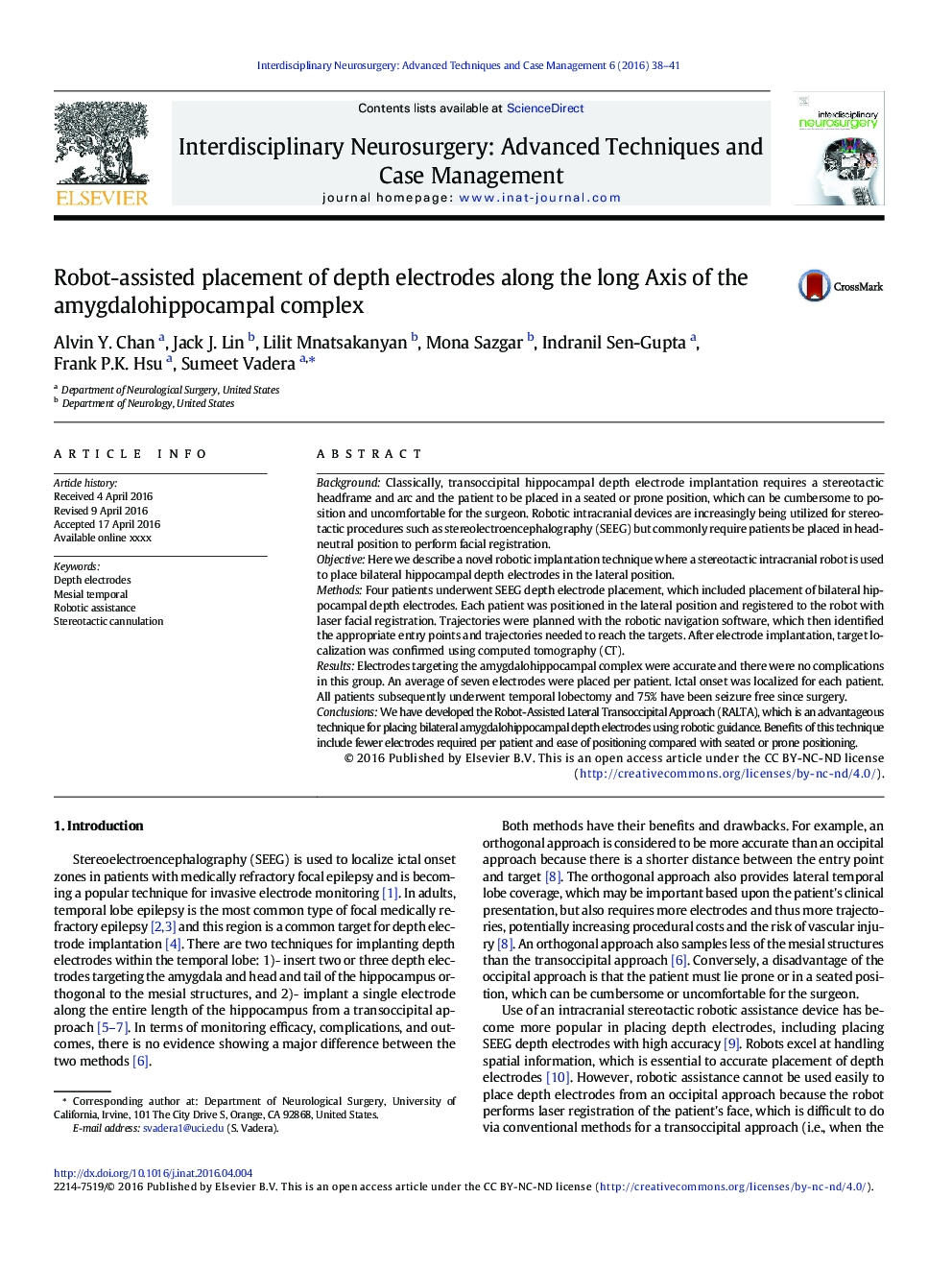| کد مقاله | کد نشریه | سال انتشار | مقاله انگلیسی | نسخه تمام متن |
|---|---|---|---|---|
| 3057700 | 1580210 | 2016 | 4 صفحه PDF | دانلود رایگان |
• Here is a novel technique using a stereotactic robot to place bilateral hippocampal depth electrodes in a lateral position.
• Four patients underwent bilateral hippocampal SEEG depth electrode placement.
• We developed the Robot-Assisted Lateral Transoccipital Approach (RALTA), an advantageous technique.
• Benefits include fewer electrodes per patient and ease of positioning compared with seated or prone positioning.
BackgroundClassically, transoccipital hippocampal depth electrode implantation requires a stereotactic headframe and arc and the patient to be placed in a seated or prone position, which can be cumbersome to position and uncomfortable for the surgeon. Robotic intracranial devices are increasingly being utilized for stereotactic procedures such as stereolectroencephalography (SEEG) but commonly require patients be placed in head-neutral position to perform facial registration.ObjectiveHere we describe a novel robotic implantation technique where a stereotactic intracranial robot is used to place bilateral hippocampal depth electrodes in the lateral position.MethodsFour patients underwent SEEG depth electrode placement, which included placement of bilateral hippocampal depth electrodes. Each patient was positioned in the lateral position and registered to the robot with laser facial registration. Trajectories were planned with the robotic navigation software, which then identified the appropriate entry points and trajectories needed to reach the targets. After electrode implantation, target localization was confirmed using computed tomography (CT).ResultsElectrodes targeting the amygdalohippocampal complex were accurate and there were no complications in this group. An average of seven electrodes were placed per patient. Ictal onset was localized for each patient. All patients subsequently underwent temporal lobectomy and 75% have been seizure free since surgery.ConclusionsWe have developed the Robot-Assisted Lateral Transoccipital Approach (RALTA), which is an advantageous technique for placing bilateral amygdalohippocampal depth electrodes using robotic guidance. Benefits of this technique include fewer electrodes required per patient and ease of positioning compared with seated or prone positioning.
Journal: Interdisciplinary Neurosurgery - Volume 6, December 2016, Pages 38–41
